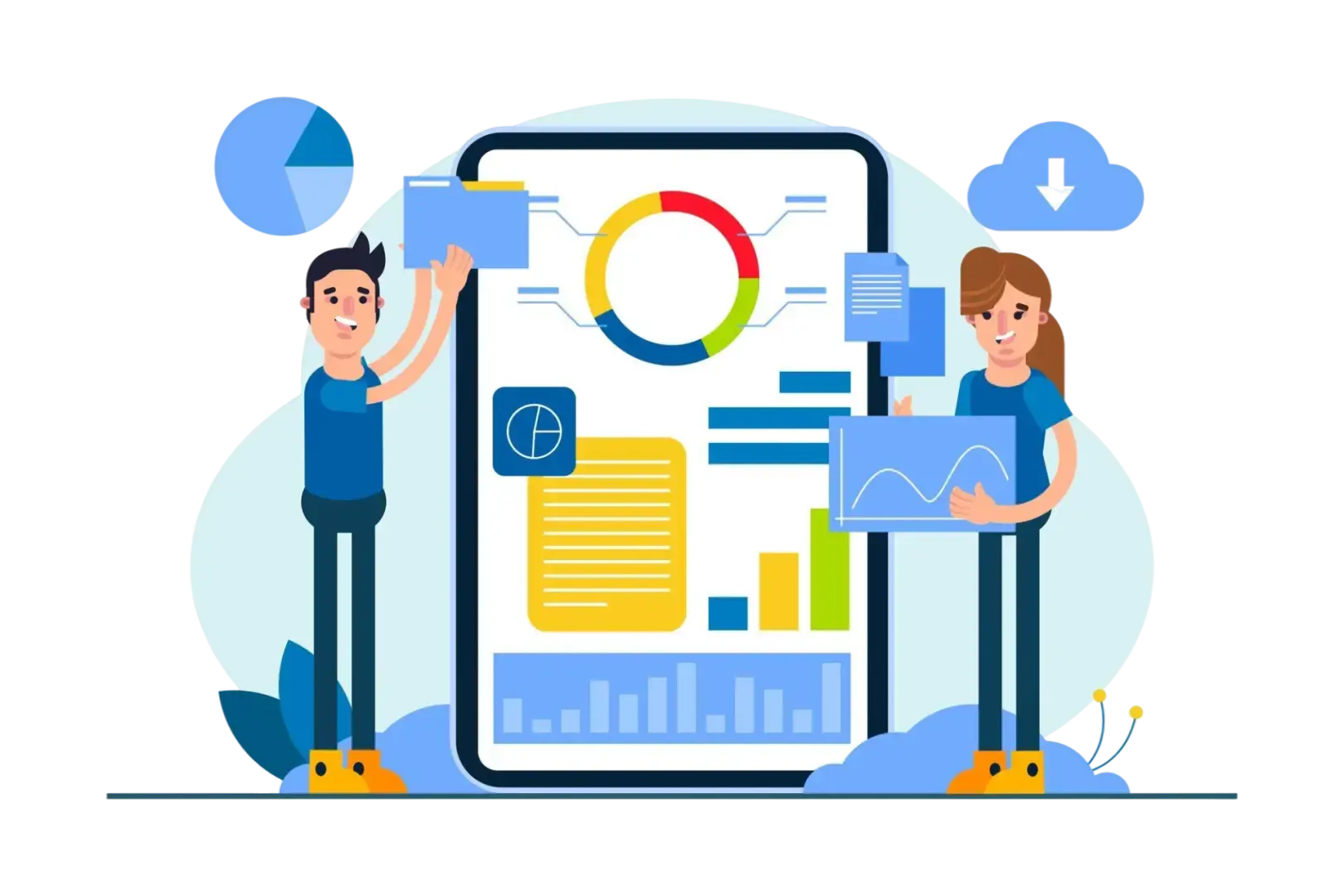What is IT Asset Management ( ITAM )?
IT Asset Management (ITAM) is the practice of keeping track of your company's IT assets, from computers and software to digital licenses and cloud resources, in an organized manner. It makes sure that assets are properly monitored, used, and repaired throughout their life cycle so that they can help make smarter budgeting and planning decisions.
At the core of ITAM is the IT inventory management, which allows teams to monitor and manage all IT assets in real-time. It not only saves unnecessary cost but also eases compliance and risk prevention through prompt, accurate asset records.
With contemporary offices embracing hybrid products and active workspaces, ITAM advances to consider assets outside of the conventional IT team. ITAM becomes an operational efficiency enabler for organizations to align technology with strategic objectives. Through effective IT inventory management, organizations are maximally informed, enhanced in decision-making, and maximizing each IT value.
The IT Asset Management Process
Inventory Assets
The very first step of any successful asset management IT system is building an accurate IT asset inventory. It means documenting all hardware, software, and electronic assets with important details such as date of purchase, cost, location, and assigned users. A correctly updated IT asset inventory is the basis for tracking lifecycle phases and allows organizations to know what assets they have, where they are, and how they are being used
Determine Lifecycle Cost
After your IT asset inventory is in place, establishing the lifecycle costs for every asset is the logical next step. An IT asset management system enables you to track the unseen costs in addition to the initial purchase, like maintenance, upgrades, and disposal. This data provides you with accurate budgeting and wiser asset planning. Having knowledge about total lifecycle costs enables decision-makers to align technology spending with business objectives and prevent out-of-pocket expenses during the asset's lifecycle.
Monitor Assets in Real Time
Real-time monitoring is important for IT asset inventory management. An IT asset management tool monitors agreements, warranties, license renewals, and asset assignments in real time. Automated monitoring enables companies to identify risks before they become issues and maintain regulatory compliance. In this manner, there is greater transparency, and IT departments can act on significant updates or renewals without having to wait for manual reminders or outdated spreadsheets.
Maintenance and Performance
Maintenance lies at the heart of every IT asset management system, so that all assets are operating at optimum levels across their life cycle. Maintenance, upgrades, and replacements need to be noted against each piece in your IT asset inventory. IT teams are then able to monitor asset performance over the long term and make data-driven decisions. Accurate planning for maintenance not only guarantees extended asset life but also enhances the efficiency of operation by reducing downtime and surprises.
Strategic Financial Planning
An advanced IT asset management solution enables long-term financial planning by gaining end-to-end visibility into the cost and value of assets. With reliable IT asset inventory data, organizations can budget, determine return on investment, and make better use of resources. Financial planning in a strategic manner ensures that assets are aligned with business goals and service levels are preserved or enhanced. This leads to optimal decision-making and optimized IT costs in the long run.
Review and Optimize
Periodic review of your IT asset inventory and IT asset management system is crucial to responsiveness and agility. Asset utilization, cost, and performance evaluation enable business organizations to identify gaps, remove redundancies, and maximize the lifecycle of every asset. Streamlining the asset management process continuously, organizations introduce more accountability, minimize waste, and maintain their IT infrastructure aligned with changing business demands and directions in technology.
Stages of the IT Asset lifecycle
Planning
Planning forms the bedrock of successful IT asset management solutions. Planning entails the identification of necessary IT assets, specifying their use, and looking for acquisition alternatives. Organizations apply cost-benefit analysis and total cost of ownership (TCO) analysis to arrive at well-informed decisions. Effective planning ensures that IT device management is aligned with long-term enterprise objectives and operational requirements.
Procurement/Acquisition
In this phase, assets are procured through purchases, leasing, licensing, or subscription to services such as SaaS. A sound IT asset management tool records procurement information for future use. Efficient IT device management ensures newly purchased devices and tools are thoroughly documented, budgeted, and aligned with strategic planning to avoid wasteful purchases or resource expenditures.
Deployment
Deployment consists of installing assets, incorporating them into legacy systems, and making them accessible and supportable to users. An organized IT asset management solution guarantees an orderly rollout process. IT device management helps out here by installing and documenting each device so as to ensure maximum performance and save setup time across departments.
Maintenance
Ongoing maintenance includes updates, patches, repairs, and performance checks. A robust IT asset management solution tracks service history and usage metrics to minimize downtime. Proactive IT device management ensures all assets are functioning efficiently, extending their usable life and maintaining productivity while keeping repair and replacement costs under control.
Optimization
Optimization involves measuring asset utilization and performance to enhance value delivery. With insights from the IT asset management solution, organizations may remap configurations or reallocate underutilization assets. IT device management enables identification of gaps or duplication, resulting in wiser asset allocation, enhanced user satisfaction, and more streamlined operations throughout the enterprise.
Retirement
Assets are phased out when they are at the end of their life cycle or are obsolete. An IT asset management solution guarantees secure decommissioning, data erasure, and contract cancellation. IT device management in this stage correctly protects sensitive information, minimizes compliance risks, and facilitates the easy migration to newer, better technologies
Benefits of IT asset management
Centralized Asset Visibility
A centralized IT asset inventory management system closes dispersed tracking processes, eliminating errors and inefficiencies. One solid source of truth allows organizations to determine with ease which assets are to be upgraded, retired, or optimized. This transparency boosts IT hardware asset management, enhancing control, transparency, and general productivity throughout the IT infrastructure.
Optimized Resource Utilization
Proper IT asset inventory management guarantees assets are utilized to their full capacity. By viewing real-time data, companies can eliminate redundancy, prevent costly purchases, and optimize usage. IT hardware asset management enables improved resource planning, reducing operational waste, and lowering costs while optimizing the value of current IT investments.
Software License Compliance
With IT asset inventory management, organizations are able to automatically monitor software use on all devices to stay in compliance. This ahead-of-the-game strategy prevents license violations and audit fee penalties. When paired with IT hardware asset management, companies have complete visibility into installs, license expiration, and renewal, keeping them constantly in legal and financial compliance..
Smarter Decision-Making
IT asset inventory management equips teams with historical and current data, enabling more strategic asset decisions. Whether assessing the purchase of hardware or optimizing workflows, what is learned makes IT planning more informed. When combined with IT hardware asset management, what is learned leads to better budgeting, procurement, and lifecycle planning throughout the organization.
Factors to consider when choosing ITAM software
Define Your Purpose
Organizations need to define their purposes before purchasing an IT asset management solution. It is important to know what you want to accomplish—whether it's improved compliance, cost management, or enhanced visibility—so it helps drive the choice. Working with IT teams means that the IT device management tool selected supports actual real-world operational needs and workflows.
Budget and Cost Evaluation
Once you’ve shortlisted tools that meet your requirements, compare features and pricing against your budget. Make sure the IT asset management software provides value for the cost. Look for transparent pricing models and explore free trials to test whether the IT device management capabilities meet your expectations before committing.
Technical Support Availability
Solid support is essential when implementing a fresh IT asset management system. Select vendors with responsive IT device management support through various channels—chat, phone, email, or user groups. Support of high quality helps issues get fixed as fast as possible, reducing downtime and enabling your staff to use the platform to its full potential.
User Reviews and Ratings
Review independent opinions to assess the performance and dependability of any IT asset management tool. Feedback from real users indicates typical strengths and areas of weakness in IT device management features. Credible third-party sites provide insights from real users, enabling you to sidestep potential mistakes and select a respected, functional solution.
Frequently Asked Questions
An IT asset refers to any hardware or software that is used within the IT infrastructure of an organization. IT assets enable data storage, communication, processing, and access, which form the core of any business.
IT asset management (ITAM) software allows organizations to track and manage the IT asset lifecycle, from acquisition and utilization through maintenance and retirement. It provides visibility into all assets, allowing for accountability and decision-making.
By offering total visibility into all users and assets in your environment, ITAM tools reduce security threats. They specify who has access to what and track asset status, especially end-of-life components, which are common security threats.
ITAM is about IT asset management for cost savings and efficiency, while IT service management (ITSM) is about IT service support and delivery. They are complementary in order to maximize assets and service delivery.
Hybrid ITAM unites asset management and FinOps to address issues associated with cloud-based asset management, for instance, AWS or Azure. The solution provides end-to-end visibility and cost management of physical and cloud infrastructure.
What Our Client Say About Us
Let's Talk About Your Project
Great ideas always deserve the perfect execution. At MSM Coretech, we are here to provide the right technology and expertise to bring your project to life. Let us be your growth partner and collaborate to build something extraordinary.

